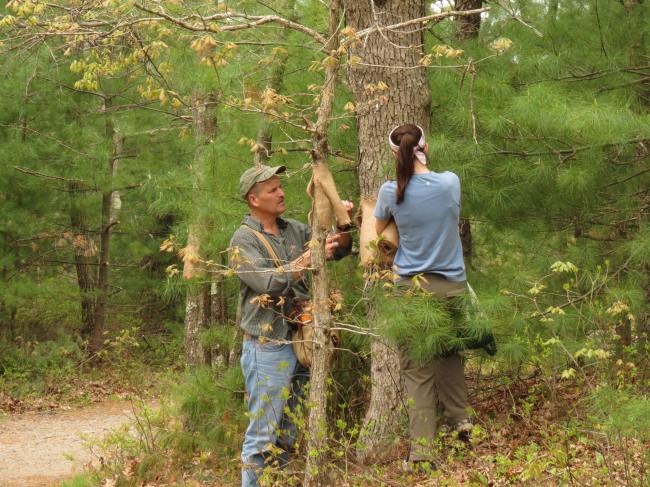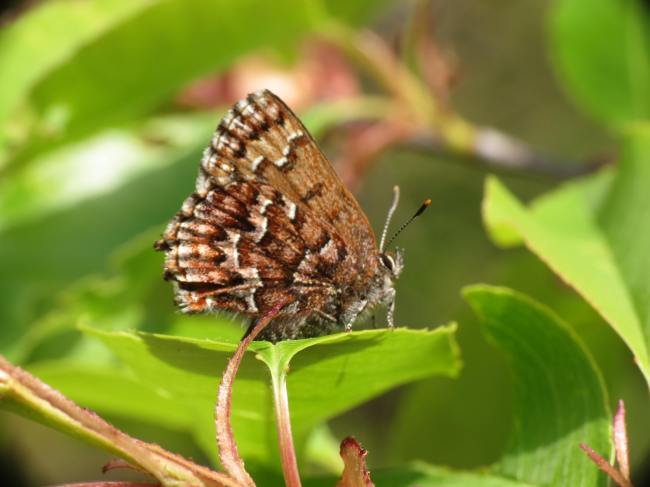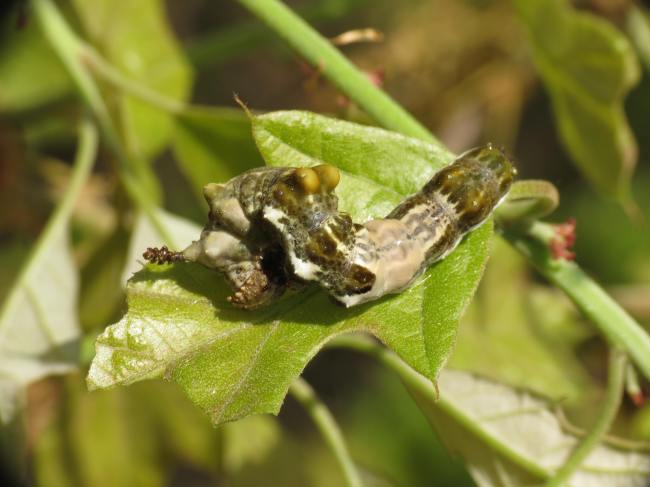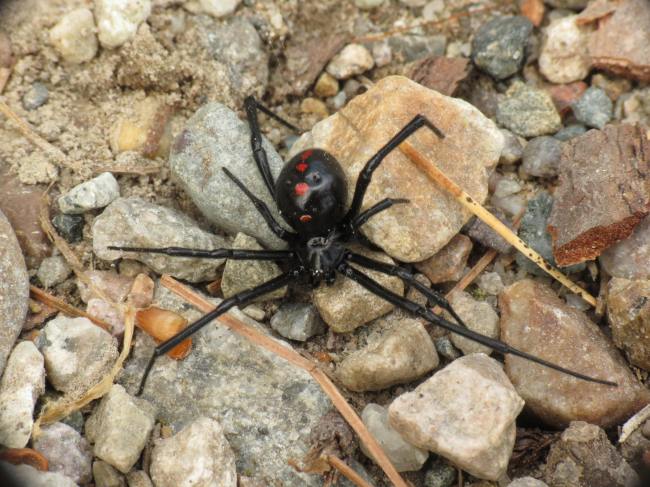Today I found three hairstreaks species each in a different stage of their life cycle. The first was what I believe to be another Oak Hairstreak prepupa attached to the burlap on a white oak tree. This was a different tree nearer the end of the summit road to the weather observatory where I got Banded and White-M hairstreak larvae last year. It was difficult to make a confident identification because this was such an advance stage prepupa and also quite dirty, but based on the fringe setae and dark dorsal heart line I’m going with Satyrium favonius ontario for now. I collected it so that it can be positively identified when it emerges and then released again at Blue Hills.

A hairstreak pre pupa found on a white oak tree. I am tentatively calling it an Oak Hairstreak (Satyrium favonius ontario).
Next were two Banded Hairstreak caterpillars (Satyrium calanus) that I collected off scrub oak (Quercus ilicifolia). These were late instars and easily recognizable by the dark dorsal patches at the anterior and posterior ends and pale oblique streaks along the sides. This species has been documented being tended by ants, but not to the degree of Edward’s Hairstreak larvae (Satyrium edwardsii). See Sam Jaffe’s photo here: http://www.pbase.com/spjaffe/image/112981413.
The third lycaenid species I saw today was an adult Gray Hairstreak (Strymon melinus). I was tapping around the bushes and investigating flowers when I scared it up near some blackberry blossoms where it may have been nectaring. This species may have as many as three broods in Massachusetts and this worn individual is at the tail end of the first. In the same area, I stumbled upon (but luckily not onto) the second Northern Black Widow (Latrodectus variolus) that I have seen on Great Blue Hill; this one was wrapping up a cricket for lunch.









